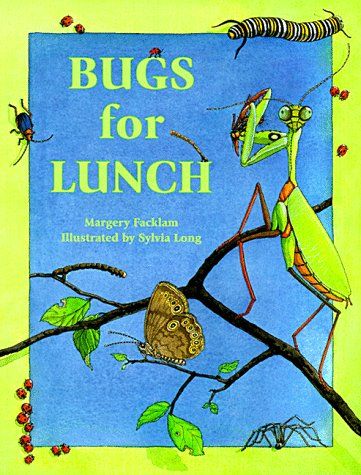In an era where culinary exploration reigns supreme, the concept of consuming insects—once relegated to niche cultures—has burgeoned into a global gastronomic trend. This transformative journey towards entomophagy, or the practice of eating insects, often sparks a combination of curiosity, skepticism, and above all, inspiration. Picture them gracing the pages of modern cookbooks: bugs for lunch, an inadvertent fusion of sustainability, health, and novelty. It is a venture that not only challenges our palates but also nudges us to recalibrate our relationship with food and the environment.
As we delve into the idea of “On the Shelf: Bugs for Lunch,” we explore the motivations driving this movement, the health advantages it offers, and the various ways to incorporate this unconventional protein source into our daily meals. The world of entomophagy extends beyond mere sustenance; it encompasses cultural heritage, environmental considerations, and an unanticipated shift in dietary norms.
Historical and Cultural Context
The consumption of insects is far from a modern phenomenon. Historically, numerous cultures have embraced this practice, integrating bugs into their diets as a source of sustenance and nutrition. From crickets in Thailand to mealworms in Mexico, edible insects have been part of traditional dishes for centuries. Their emergence in contemporary cuisines signifies a profound reconnection with age-old practices, reminding us that evolution is not always a linear progression; sometimes, it involves revisiting paths long since traveled. As more chefs and food artisans showcase insect-based recipes, diners find themselves beneath a culinary tapestry woven with rich history and remarkable legacy.
The Environmental Imperative
As discussions surrounding climate change intensify, the search for sustainable food sources has never been more critical. Insects exemplify a resource-efficient food source, requiring substantially less land, water, and feed compared to traditional livestock. The cultivation of crickets, for instance, produces significantly lower greenhouse gas emissions, positioning insects as a formidable candidate in the quest for sustainability. The United Nations has even lauded them as a means of combatting food insecurity, particularly in regions where agricultural resources are scarce.
Moreover, bugs possess a high feed conversion rate. This means that for every kilogram of feed, they yield considerably more edible protein than cattle or pigs. By integrating insects into our diets, we could potentially alleviate the strain on our planet’s resources, providing nourishment while simultaneously safeguarding the environment. Thus, “On the Shelf: Bugs for Lunch” is not merely a catchy title; it serves as an urgent call to action, urging us to reconsider our meal components through a sustainable lens.
Health Benefits of Insect Consumption
This is particularly beneficial in addressing global deficiencies in protein and micronutrients, especially in underdeveloped nations. Incorporating insects into everyday meals not only promotes nutritional diversity but could also pave the way for improved health outcomes among populations who are often skimpy on essential nutrients. Consequently, the narrative surrounding bugs for lunch transitions from mere curiosity to a robust argument for public health advocacy.
Culinary Innovations and Exquisite Recipes
The beauty of edible insects lies in their versatility. From crunchy snacks to intricately crafted dishes, the potential applications of insects in cooking are boundless. Imagine a savory cricket taco, replete with fresh guacamole and vibrant salsa, or a delectable mealworm stir-fry, bursting with colorful vegetables and aromatic sauces. These opportunities not only tantalize taste buds but also encourage creativity in the kitchen.
For those venturing into the realm of entomophagy, starting small is often a wise approach. Snack bars enriched with cricket protein, flavored roasted ants, or even cricket flour pancakes represent accessible stepping stones toward broader culinary exploration. The beauty of incorporating insects lies in their adaptability; they can seamlessly blend into favorite recipes, providing a novel twist to familiar flavors.
Challenges and Perceptions
Ultimately, “On the Shelf: Bugs for Lunch” represents a microcosm of a broader movement toward sustainability, health, and culinary innovation. By embracing this trend, we not only open our palates to new and exciting flavors but also advocate for the longevity of our planet and the health of diverse populations. The next time you glimpse bugs on the menu, consider not just the taste, but the story, the culture, and the potential for a brighter, more sustainable future.









Leave a Comment